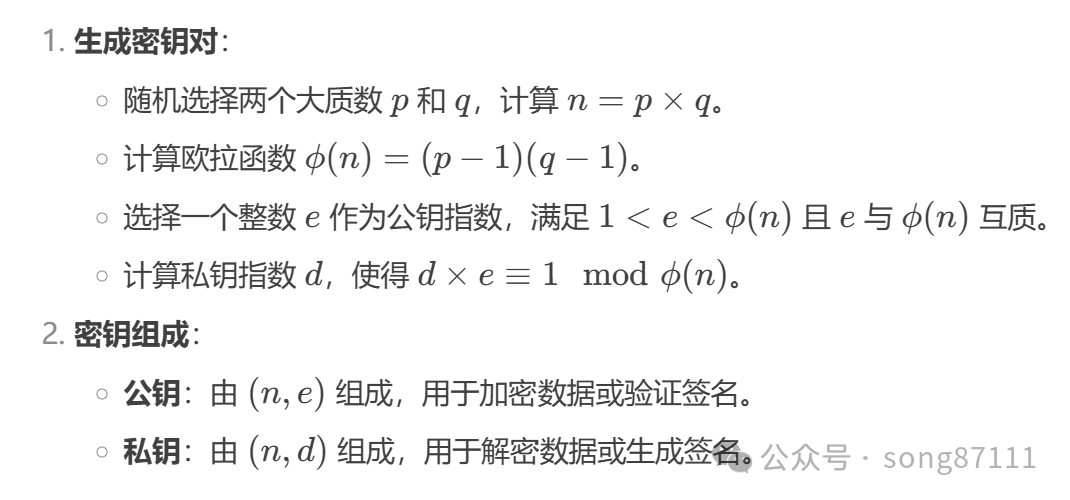RSA (Rivest-Shamir-Adleman) is a classic asymmetric encryption algorithm proposed by three cryptographers Ron Rivest, Adi Shamir, and Leonard Adleman in 1977. Its core function is to achieve secure communication through public key encryption and private key decryption, widely used in digital signatures, SSL/TLS protocols, data encryption, and other fields.
Key Generation Principle of RSA

Significance of Efficiency Issues
-
Time Consumption for Key Generation: The key generation of RSA relies on large prime number operations, especially when the key length increases (e.g., 2048 bits or 4096 bits), the computational complexity significantly increases, which may become a performance bottleneck.
-
Comparative Case: If a new encryption algorithm (such as lattice-based cryptography) improves key generation efficiency by 15 times compared to RSA, it means that under the same security strength:
-
Key generation time is greatly reduced (e.g., from 100 milliseconds to 6.7 milliseconds);
-
Resource-constrained devices (such as IoT terminals) can complete key initialization faster;
-
System throughput in high-concurrency scenarios (such as vehicular communication) is significantly improved.
Applications and Limitations of RSA
-
Advantages: Security is based on the difficulty of large number factorization, with a solid mathematical foundation and a high degree of standardization.
-
Limitations:
-
High Computational Overhead: Key generation, encryption/decryption speeds are slower than symmetric encryption algorithms (such as AES);
-
Quantum Threats: Shor’s algorithm can efficiently break RSA on quantum computers, promoting post-quantum cryptography research.
Why Use RSA as an Efficiency Comparison Benchmark?
RSA, as the “gold standard” of asymmetric encryption, has its performance parameters (such as key generation time, encryption/decryption speed) often used as benchmarks for measuring new algorithms. The statement of “15 times improvement over RSA” intuitively reflects the breakthrough improvement in efficiency of the new method.